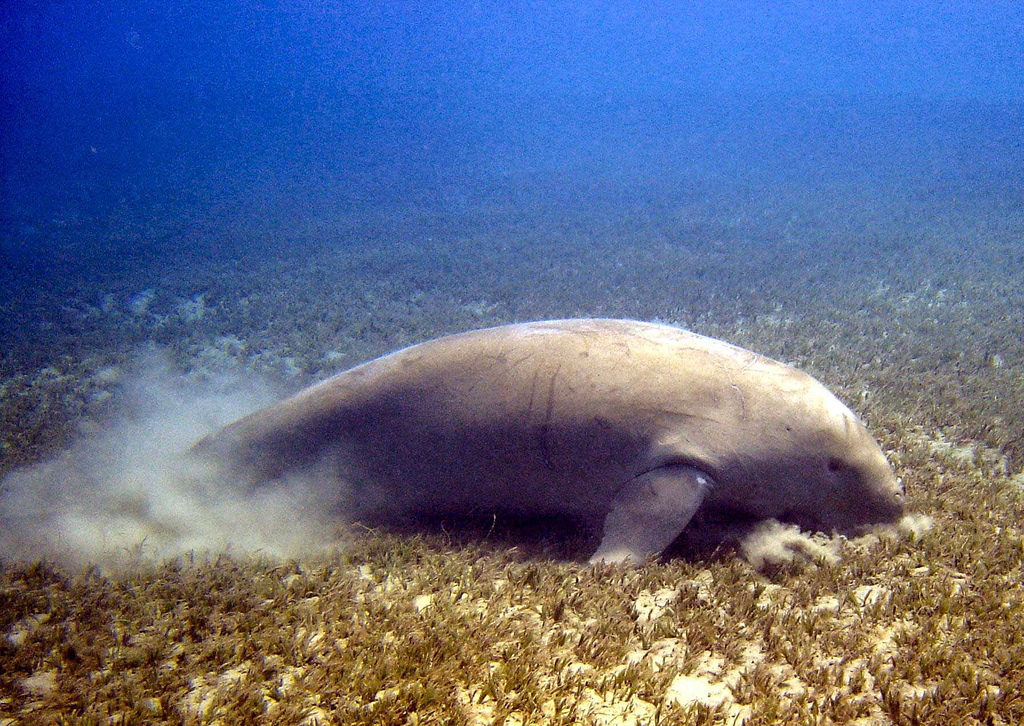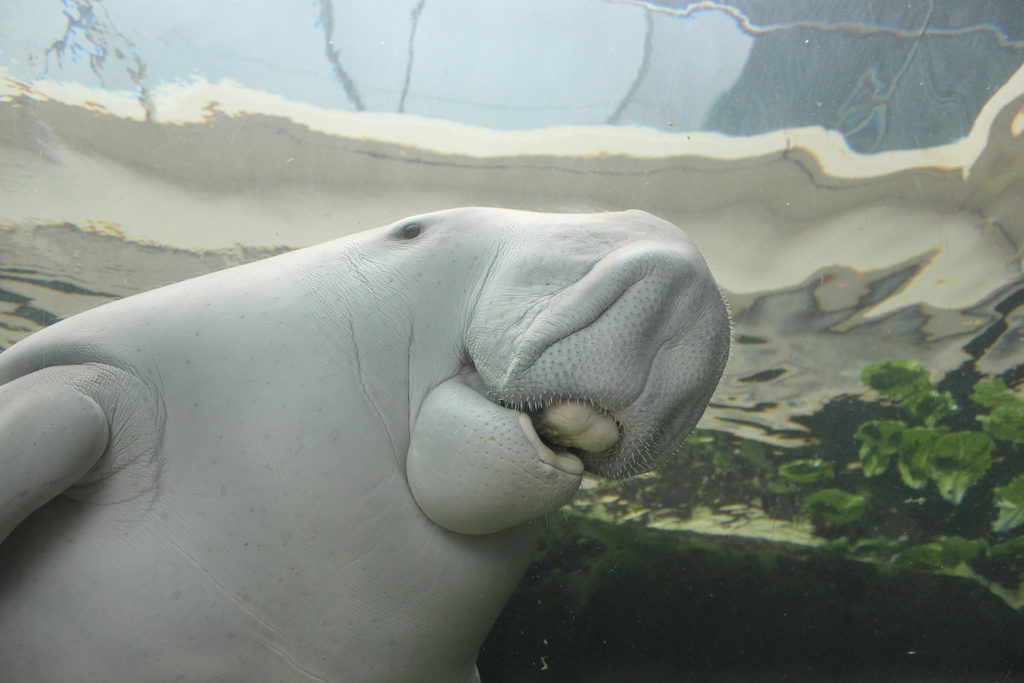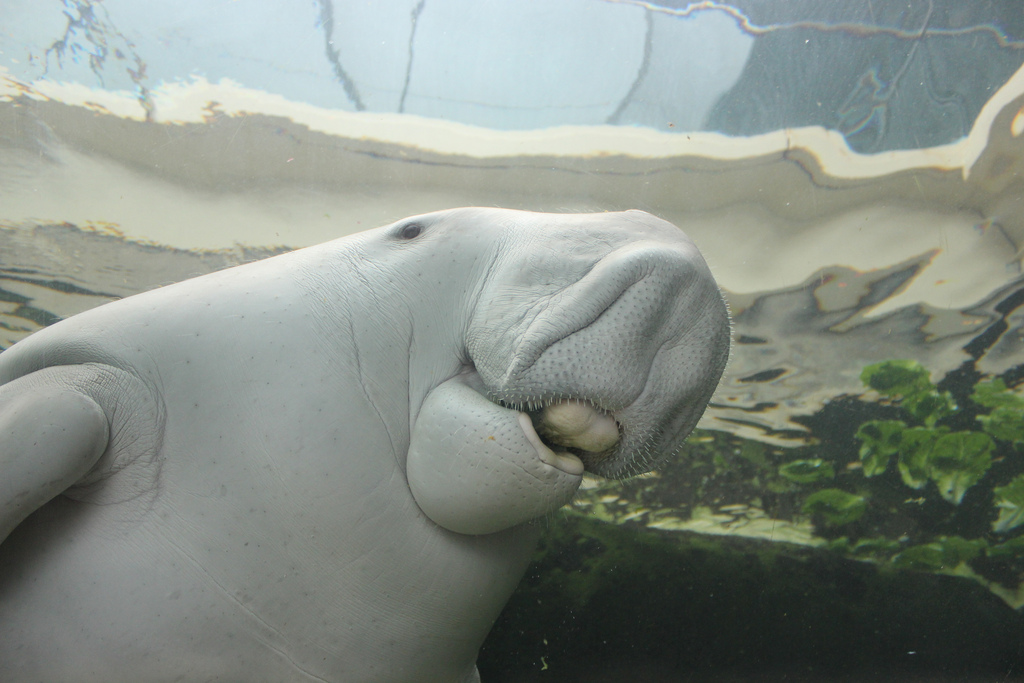Dugongs, who are also known as sea cows, are close relatives to manatees. They both belong to the animal group Sirenia. They’re a marine animal that can be seen mainly around the coastal waters of the Red Sea, East Africa, Australia, Japan and the Philippines. Take a look below for 23 more fun and interesting facts about dugongs.
1. The graceful swimming of dugongs is what inspired stories of sirens and mermaids. However, they don’t look anything like the tales.
2. The dugong population has decreased drastically due to chemical pollution, uncontrolled hunting by humans and accelerated coastal development.
3. They’re currently protected from hunting by law, but their population is still low due to their slow reproduction process.
4. Dugongs are a relatively large animal. They can reach lengths of 11 feet and can weigh up to 2000 pounds.
5. They have flat tails and flippers like whales, but they’re more closely related to elephants.
6. Dugongs evolved 50 to 60 million years ago, when creatures that looked similar to elephants entered and began living in the water.
7. They have a large mouth with an upper lip that’s designed for bristling sea grass.

8. They’re try herbivores as they only eat sea grass. However, they can eat up to 88 pounds of seaweed daily.
9. Before they swallow the sea grass, they’ll shake their head to get all the sand out of their food.
10. When they come close to shallow water, they will “stand” on its tail with its head above the water’s surface.
11. They breathe using their lungs. However, it needs to reach the surface of the water every 6 minutes in order to breathe oxygen.
12. Dugongs are able to live on their own, but they can also be found in pairs or larger groups. When they’re in groups, they use various sounds to communicate. Those sounds can vary from barks to chirps and trills.
13. They’re not a fast swimmer compared to some other sea creatures. It swims normally at 6 miles per hour, however it can reach speeds of 14 miles per hour.
14. Male dugongs develop tusks during puberty, which is usually between the ages of 12 and 15. Female dugongs don’t have any visible tusks.
15. They have very dense and heavy bones, which is what allows them to be submerged under water. Their lungs are positioned along their back, which is what keeps them in a horizontal position while they’re swimming.
16. Their main predators are killer whales, sharks and crocodiles. However, their biggest threat is human development.
17. Dugongs reach sexual maturity between the ages of 9 and 15. Male dugongs are known for establish and protecting their courtship territory.

18. Pregnancy lasts about one year and will end with one calf. Female dugongs give birth every 3 to 7 years.
19. The bond between a mother and her calf is very strong. The mother will help the calf reach the surface of the water for its first breath.
20. Dugong calfs will stay with their mother until it reaches 18 months of age.
21. Dugongs can live to be 70 years old if they stay in protected habitats with enough food sources.
22. Some dugong packs will migrate throughout the winter. They will either move to warm bays or canals or the Northern countries in their range near the equator.
23. Their name comes from the Talagog name “dugong”, which came from the Malay term “duyung” which means “lady of the sea.”




